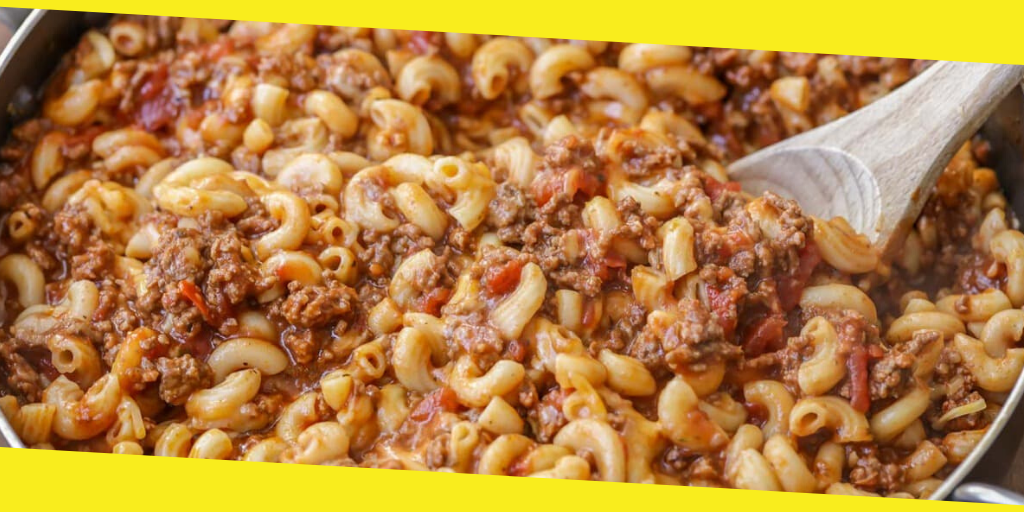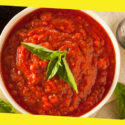Goulash for Beginners

Are you ready to try something new and different for dinner? What if I told you a classic Hungarian dish that dates back centuries is making a big comeback at American dinner tables, I’m talking about goulash of course. While this traditional comfort food has been around for a very long time, it’s probably a new one for you. Today we are going to look at goulash and tell you a little about it, then you can decide for yourself if you’d like to make a goulash dinner for your family. We’ve put together some history, ingredients and general information in our article titled: goulash for beginners.
Let’s talk a little bit about the history of goulash. Goulash is kind of in between a soup and a stew. Unlike some stews, Goulash is not overly packed full of beef and vegetables, it is a little more brothy. But through the cooking process, the broth becomes thicker and more like a rich sauce. The origins of goulash have been traced to the 9th century, to stews eaten by Magyar shepherds. The stew was then dried in the sun and packed into bags made of sheep’s stomachs. At mealtime, water was added to a portion of the meat to reconstitute it into a soup or stew.The word Goulash comes from the Hungarian word Gulyás pronounced almost the same only with no L, which is a word for a Hungarian Herdsman or Cowboy. As the herdsman would go on cattle drives they would butcher the weaker cows that may not make the drive and make a stew or soup from them.
Now that you know the origins of the dish you’re about to cook, I’d like to go over the styles of goulash you might choose from before you get your ingredients. There are two main kinds of goulash, traditional Hungarian, and the more modern but still classic American version. So, what’s the difference between the two? The big difference is the macaroni noodles in the American version, this is what most people nowadays think of when they hear goulash – macaroni and meat sauce. But there are other key differences including what is served with the goulash. Hungarian style has traditionally been served with Hungarian style noodles, or even Hungarian dumplings. For American style it’s not unusual to see this great dish served with mashed potatoes or even rice.
To be honest, the two dishes are not dissimilar, both characterised by a generous amount of red paprika, a spice that only became popular in Hungary in the early 19th century, and which sets them quite apart from all the other beef stews you could choose to warm up a chilly spring evening. For me, and my family heartily agrees, the best version of goulash is the classic American, we just love the macaroni noodles, and goulash is not goulash without them. If you do decide to go with the traditional Hungarian my one tip would be to try it with Hungarian dumplings, a modern twist that will leave your dinner guests asking for seconds.
Before we go I am including my very own recipe for goulash handed down to me by my family, this is the classic American version, and it is easy and delicious, so try some goulash tonight, you wont regret making this amazing feast!
INGREDIENTS
2 tbsp. extra-virgin olive oil
1 medium yellow onion, chopped
2 cloves garlic, minced
1 lb. ground beef
Kosher salt
Freshly ground black pepper
1 tbsp. tomato paste
1 1/4 c. low-sodium beef broth
1 (15-oz.) can tomato sauce
1 (15-oz.) can diced tomatoes
1 tsp. Italian seasoning
1 tsp. paprika
1 1/2 c. elbow macaroni, uncooked
1 c. shredded cheddar
Freshly chopped parsley, for garnish
DIRECTIONS
In a large skillet over medium heat, heat oil. Add onion and cook until soft, about 5 minutes. Add garlic and cook until fragrant, about 1 minute more.
Add ground beef and cook until no longer pink, about6 minutes. Drain fat and return to the pan. Season with salt and pepper.
Add tomato paste and stir to coat, then pour in broth, tomato sauce, and diced tomatoes. Season with Italian seasoning and paprika, and stir in macaroni. Bring to a simmer and cook, stirring occasionally, until pasta is tender, about 15 minutes.
Stir in cheese and remove from heat. Garnish with parsley before serving.
Recommended For You
How to Choose Perfect Coffee Beans?
Most Inside
Most Inside offers high-quality recommendations and valuable updates to enhance all aspects of your life, providing premium guidance and enriching experiences.




